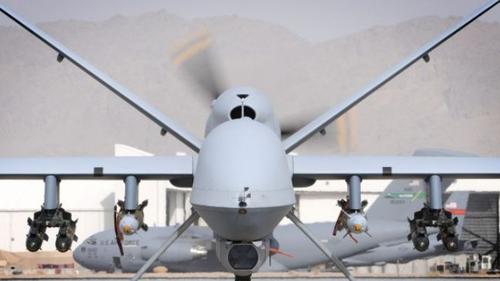Information warfareHacked U.S. surveillance drone over Crimea shows new face of warfare
A recent report of a U.S. surveillance drone flying over the Crimea region of Ukraine being hacked by Russian forces, is just one of many indication that the twenty-first-century global battlefield will take place in cyberspace. Radio and other frequencies which cover the electromagnetic spectrum are the new contested domain.

Cyberspace will be the next battleground // Source: presstv.ir
A recent report of a U.S. surveillance drone flying over the Crimea region of Ukraine being hacked by Russian forces, is just one of many indication that the twenty-first-century global battlefield will take place in cyberspace.
The U.S. military has defined “information warfare” to include cyberthreats and the manipulation of wireless networks. According to US News, military “cyberoperations” were once considered attacking and defending networks and connected devices, and hacking was associated with an intrusion into remote computers through wired channels. Today, however, cyberoperators operate wirelessly. Radio and other frequencies which cover the electromagnetic spectrum are the new contested domain.
The U.S. Navy established the Fleet Electronic Warfare Center (FEWC) in 2008, merging electronic warfare and information technology functions, and recently the Army’s Integrated Cyber and Electronic Warfare (ICE) program acknowledged that the boundaries between traditional cyberthreats, such as someone using the Internet to hack, and traditional electronic warfare threats, such as radio-controlled improvised explosives devices (IEDs) which use the electromagnetic spectrum, have been blurred.
“This blending of networks and systems, known as convergence, will continue and with it come significant implications as to how the Army must fight in the cyber environment of today and tomorrow,” said Giorgio Bertoli, senior engineer of the Army’s Communications-Electronics RD&E Center-Intelligence and Information Warfare Directorate’s (I2WD) Cyber/Offensive Operations Division. He added that “the concept of technology convergence originated as a means to describe the amalgamation of traditional wired versus wireless commercial services and applications, but has recently evolved to also include global technology trends and U.S. Army operational connotations — specifically in the context of converging cyber and EW operations.”
Bertoli notes that the biggest challenge for the Army is not technological, but operational and policy-related. The Army traditionally likes to build systems for specific tasks, “build a radio to be a radio, build an EW system to be an EW system,” but modern hardware systems have multiple capabilities, so the Army must also form its units to operate with multiple capabilities. The Army’s recently released a field manual which refers to the creation of tactical units that are manned with personnel trained in the many aspects of electronic warfare including cyber. Members of these units will be tasked with protecting military drones during combat, as well as hacking enemy drones without hurting friendly systems in the process.
